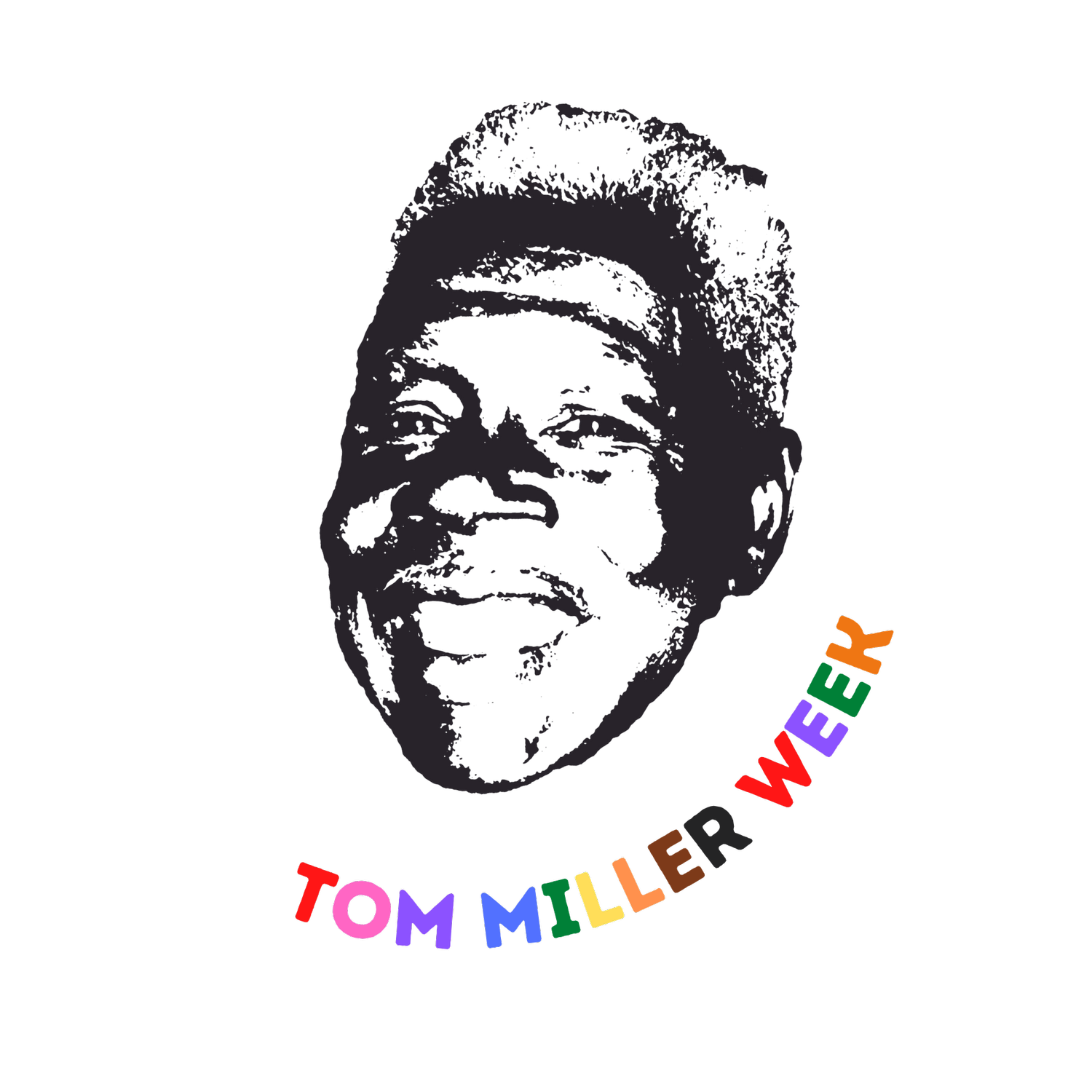Tom Miller (1945–2000) was a master multidisciplinary artist. He created colorful, whimsical, and humorous screenprints, murals, and sculptures from discarded furniture he found around Baltimore City.
In his adolescence, he attended George Washington Carver Vocational-Technical High School – also known as Carver Vo-Tech, located in the western part of Baltimore. Established in 1925, The Colored Vocational School, now Carver, was established to train and equip Black youth for immediate employment and entrepreneurship after grade school because Black youth were not awarded the same opportunities as White students. The Vocational School attracted students from all over the city. It offered classes in automotive repair, carpentry, dressmaking, shoe repair, design, and more! The school continues to educate and empower Black leaders of the future, yet they are still greatly underserved and unrecognized for their history and contributions to the city of Baltimore.
“I’ve always been interested in furniture and I went junk shopping all the time.” Miller's family was supportive of his collecting and artistic practices. However, it was his family's annual ritual of repainting furniture as a part of spring cleaning that most inspired him. “[The fact] that most of my pieces are functional also lends itself to the African concept that art should be functional,” wrote Miller for his master’s thesis.
Tom Miller named his style "Afro-Deco" to describe how he seamlessly merged influences from his childhood and the Art Deco Style in the 1930s. Miller completely covered his three-dimensional canvases with bright paint, flat compositions, and stylish adornments like bells, tassels, and shoes. He drew inspiration from African American stereotypes, moments in history, African proverbs, and notable Americans like Billie Holiday.
Many of Miller’s ideas also grew from his collection of Black memorabilia. Black memorabilia produced in Europe had a “different flavor than their American counterparts.” Vintage prints and toys depicting African Americans in a positive light were few and far between, however, Miller had several in his collection. The figurines depicted Black features and lifestyles attractively and realistically. Miller's collection got him thinking that when these figures were removed from their original social context they could be portrayed in a positive light and even used to make satirical comments on society.
The artist’s Mama’s Little Rock and Roll Baby (1991) consists of a rocking chair wearing party shoes and socks. The rocker and chair-back reference a bright red, juicy slice of watermelon. The chair references the racist American and European memorabilia Tom Miller collected of pickaninnies eating watermelons and Black children being fed to alligators. A gazelle runs across the chair’s seat, while a row of bells is attached to it, that jingle when moved.
Miller’s painted furniture caused a sensation in the city’s art scene after he sold every piece that was presented for his graduate thesis show at the Maryland Institute College of Art (MICA) in 1987. He was immediately signed and represented by a gallery. His work was shown at major museums and galleries across the country. Private collectors and curators would wait years to acquire one of his painted pieces.
Miller’s work is much like his personality–fun, playful, humorous, and witty. However, after the death of his partner and his own HIV diagnosis, the realities of his mortality became part of his everyday experience. His obituary notes that Miller would find old, broken-down furniture pieces and "hide their hurt" with layer upon layer of glossy, often electric-colored paint on the surface along with animal print fabrics and faux fur upholstered seats.
Knocking on Heaven’s Gate (1997) explicitly represents the final chapter of Miller’s battle with AIDS. The single wooden rocking chair orients the viewer upward looking towards the heavens. The chair’s seat depicts an evening sky with fluffy, white, and blue clouds–partially obstructed by a green tree with pink flowers. The rocker and chair-back reference pearly white gates of heaven shining brightly. The arms are painted bright yellow with small red polka dots. The black, yellow, white, and red ribbed segments, as well as the checkerboard pattern, represent the state flag of his hometown of Baltimore, Maryland; but more significantly the artist’s final resting place.
Two years after this successful debut, in 1990, Miller was diagnosed with AIDS and passed away in 2000 due to AIDs related complications.
He was 45 years old.








